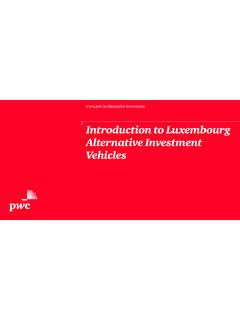Transcription of COMMISSION RECOMMENDATION establishing a common …
1 EUROPEAN. COMMISSION . Brussels, C(2019) 7131 final ANNEX. ANNEX. to the COMMISSION RECOMMENDATION . establishing a common "Practical Handbook for Border Guards" to be used by Member States' competent authorities when carrying out the border control of persons and replacing COMMISSION RECOMMENDATION C(2006) 5186 of 6 November 2006. EN EN. ANNEX. Practical Handbook for Border Guards PART ONE - DEFINITIONS ..5. PART TWO - BORDER CHECKS ..12. SECTION I: Border check procedures ..12. 1. Checks at border crossing points ..12. 2. Checks on persons enjoying the Union right of free movement ..17. 3. Checks on third-country nationals upon entry ..23. 4. Searches in the Schengen Information System (SIS) and Stolen and Lost Travel Documents (SLTD)..32. 5. Special rules for checks on certain categories of persons ..37. Heads of State ..37. Pilots of aircraft ..37. Seamen ..38. Holders of diplomatic, official or service passports and members of international organisations.
2 39. Border residents benefiting from a local border traffic regime ..41. Minors ..42. School pupils from third countries resident in an EU Member State or in a third country not subject to the visa obligation ..44. Cross border workers ..45. ADS tourists ..46. Rescue services, police, fire brigades and border guards ..47. Offshore workers ..47. Intra-corporate transferees ..47. Researchers and their family members ..49. Students ..53. 6. Stamping of travel documents ..55. 7. Relaxation of checks ..59. 8. Refusal of entry ..60. 9. Visas applied for at the border, including to seafarers in transit, and refusal of such visas ..70. 10. Annulment and revocation of 11. Special transit schemes ..71. 1. 12. Asylum-seekers/applicants for international protection ..73. 13. Registration of information at the 14. Cooperation with other services ..77. 15. Marking of fraudulent 16. Verification of the authenticity of the data stored in a biometric passport ..78. 17. Validity of children entries in parents' passports.
3 78. SECTION II: Land borders ..79. 1. Checks on road traffic ..79. 2. Checks on rail traffic ..82. 3. Local border traffic ..85. SECTION III: Air borders ..86. 1. Checks at the airport ..86. 2. Check in aerodromes ..91. 3. Checks on persons on private flights ..92. SECTION IV: Sea borders ..92. 1. General checking procedures on maritime traffic ..92. 2. Checks on cruise ships ..95. 3. Checks on pleasure boating ..98. 4. Checks on coastal fishing ..99. 5. Checks on ferry connections ..100. 6. Cargo connections between ports located in the territory of the area without internal border controls ..101. SECTION V: Checks on inland waterways shipping ..101. 1. Inland waterways shipping ..101. PART THREE: BORDER SURVEILLANCE ..103. 1. Purpose of surveillance ..103. 2. The methods of surveillance ..103. PART FOUR: LIST OF RELEVANT LEGAL INSTRUMENTS ..105. APPENDIX A ..110. Notification Procedure ..110. APPENDIX B ..112. Risk 2. FOREWORD. The main objective of the Schengen cooperation is the creation of an area without internal border It requires efficient controls at external borders2 as well as the application of relevant flanking measures in areas such as police and judicial cooperation and visa policy.
4 The provisions on external border control apply nevertheless at internal borders in two cases. The first one relates to the situation where the process for the lifting of internal border controls at these internal borders has not yet been finalised3. Border controls at these borders must be carried out in line with the provisions of Title II of the Schengen Borders Code4. The second case refers to the situation where controls at internal borders are temporarily reintroduced by a Schengen State fully applying the Schengen acquis5. The relevant provisions of Title II then apply mutatis mutandis as internal borders are not becoming external The objective of this Practical Handbook for Border Guards is to lay down guidelines, best practices and recommendations relating to the performance of border guard duties in the Schengen States. The handbook is intended as well to be a user guide for border guards in respect of the measures and decisions to be taken along the borders where the external border provisions The content of this handbook deals essentially with the control of persons at the border and is based on Union instruments regulating the crossing of borders (and in particular the Schengen Borders Code), the issuance of visas, the right of free movement under Union law and the application for asylum.
5 A list of legal acts regulating the areas covered by this handbook is contained in Part IV. When reference is made in this handbook to other types of control which may or should be carried out at the border (for example, customs, phytosanitary or health-related controls), the relevant Union and national legislation will apply to such types of controls. In any case, Schengen States should always ensure a close cooperation between the different authorities carrying out controls at borders, as well as with authorities carrying out controls within the territory. 1. Internal borders as defined in Article 2 (1) of the Schengen Borders Code. 2. External borders as defined in Article 2(2) of the Schengen Borders Code. 3. Article 3(2) of the 2003 Act of Accession (Cyprus), Article 4(2) of the 2005 Act of Accession (Bulgaria and Romania) and Article 4(2) of the 2012 Act of Accession (Croatia). 4. Regulation (EU) 2016/399 of the European Parliament and of the Council of 9 March 2016 on a Union Code on the rules governing the movement of persons across borders (Schengen Borders Code), OJ L 77, , 5.
6 Article 32 of the Schengen Borders Code. 6. See in particular Report from the COMMISSION to the European Parliament and the Council on the application of Title III (Internal Borders) of Regulation (EC) No 562/2006 establishing a Community Code on the rules governing the movement of persons across borders (Schengen Borders Code). 3. This handbook is not intended to create any legally binding obligations upon Schengen States, or to establish new rights and duties for border guards or any other person who might be concerned by it. Only the legal acts on which this handbook is based, or refers to, produce legally binding effects and can be invoked before a national jurisdiction. 4. PART ONE - DEFINITIONS. 1. SCHENGEN STATES (EU Member States implementing the Schengen acquis related to external borders as well as Schengen Associated Countries): 1. Belgium 11. Iceland 21. Norway 2. Bulgaria 12. Italy 22. Austria 3. Czech Republic 13. Cyprus 23. Poland 4. Denmark 14.
7 Latvia 24. Portugal 5. Germany 15. Liechtenstein 25. Romania 6. Estonia 16. Lithuania 26. Slovenia 7. Greece 17. luxembourg 27. Slovakia 8. Spain 18. Hungary 28. Finland 9. France 19. Malta 29. Sweden 10. Croatia 20. Netherlands 30. Switzerland 5. Ireland and the United Kingdom have been authorised to apply some parts of the Schengen acquis but in a limited number of areas (police and judicial cooperation in criminal matters). which do not include external border control. As a consequence, for the purpose of this Handbook which focuses on border issues and is addressed to border guards, Ireland and the United Kingdom are not included when the term "Schengen States" is used. 2. EU MEMBER STATES: 1. Belgium 11. Croatia 20. Austria 2. Bulgaria 12. Italy 21. Poland 3. Czech Republic 13. Cyprus 22. Portugal 4. Denmark 14. Latvia 23. Romania 5. Germany 15. Lithuania 24. Slovenia 6. Estonia 16. luxembourg 25. Slovakia 7. Ireland 17. Hungary 26. Finland 8. Greece 18.
8 Malta 27. Sweden 9. Spain 19. Netherlands 28. United Kingdom 10. France 3. SPECIFIC SITUATION OF SCHENGEN STATES NOT YET FULLY. APPLYING THE SCHENGEN ACQUIS. Bulgaria, Croatia, Cyprus and Romania do not yet fully apply the Schengen acquis and controls at their borders with other Schengen States have not yet been lifted. They apply at all their borders the rules of Title II of the Schengen Borders Code. The following specific rules apply: - checks at their borders ( with regard to the length of stay, visa, residence permit, level of means of subsistence) are made in relation to their own territory;. - provisions related to the Visa Code do not apply to Bulgaria, Croatia, Cyprus and Romania. As a consequence, a reference to Schengen visa does not include visa issued by one of these four Schengen States. - provisions on the VIS will only apply to Bulgaria and Romania when Decision (EU) 2017/1908 of 12 October 2017 on the putting into effect of certain provisions of the Schengen acquis relating to the Visa Information System in the Republic of 6.
9 Bulgaria and Romania7 will apply and with the limitations provided in this decision (read-only access). - provisions on the SIS do not apply to Cyprus; they apply fully to Bulgaria and Romania in accordance with the provisions of Council Decision 2010/365/EU of 29. June 2010 on the application of the provisions of the Schengen acquis relating to the Schengen Information System in the Republic of Bulgaria and Romania8 and Council Decision (EU) 2018/934 on the putting into effect of the remaining provisions of the Schengen acquis relating to the the Schengen Information System in the Republic of Bulgaria and Romania9; they apply partially to Croatia in accordance with the provisions of Council Decision (EU) 2017/733 of 25 April 2017. on the application of the provisions of the Schengen acquis relating to the Schengen Information System in the Republic of Croatia10. - Schengen States not yet fully applying the Schengen acquis unilaterally may recognise certain documents as equivalent to their national visa for transit through or intended short-stay on their territory11.
10 When reference is made to "Schengen States fully applying the Schengen acquis" or to "the area without internal border controls", Bulgaria, Croatia, Cyprus and Romania are not included. 4. EEA Countries: Norway (NO), Iceland (IS) and Liechtenstein (LI). 5. 'Area without internal border controls' refers to the area made of the territories of the Schengen States fully applying the Schengen acquis (and therefore excluding Bulgaria, Croatia, Cyprus and Romania). 6. 'Persons enjoying the right of free movement under Union law12' are nationals of EU Member States, EEA countries and Switzerland, as well as members of their family, regardless of their nationality accompanying or joining them. 7. OJ L 269, , p. 39 43. 8. OJ L 166, , 9. OJ L 165, , p. 37 39. 10. OJ L 108, , p. 31. 11. OJ L. 157, , p. 23. 12. Article 2(5) of Regulation (EU) 2016/399 of the European Parliament and of the Council of 9 March 2016. on a Union Code on the rules governing the movement of persons across borders (Schengen Borders Code).











